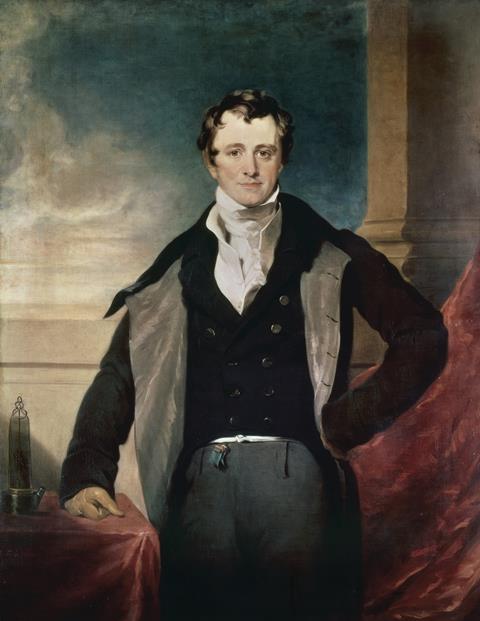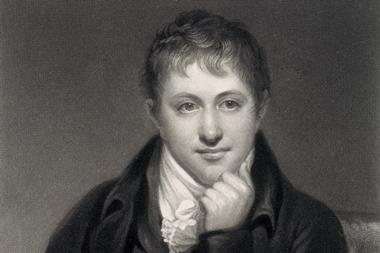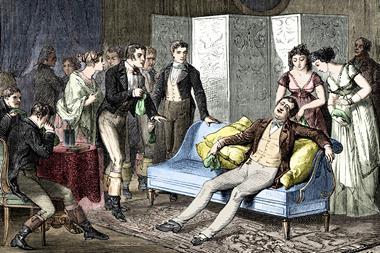Online courses and student-run projects show there’s great interest in discussing Davy’s links to slavery and scientific racism

On 9 November 1820, Everard Home’s paper ‘On the black rete mucosum of the Negro’ was read before the Royal Society. Home argued that black skin gave people living in ‘the tropics’ protection against the heat of the sunlight and they could cope better in these climates, an argument widely used to justify chattel slavery.
In the paper, Home calls upon the expertise of the chemist, inventor, poet and soon-to-be president of the Royal Society, Humphry Davy, reflecting his perceived authority on the origins of blackness and black skin colour. In 1799, in one of his two earliest papers on the generation of phosoxygen (Davy’s term for oxygen combined with light), Davy described Thomas Beddoes’s experiment in using chlorine to bleach the fingers of an unnamed Black man and argued that black skin was caused by a superabundance of carbon, which could become hereditary.
As Home’s paper suggests, Davy participated in the creeping racialisation of ‘scientific’ research and the move towards more fixed racial categories that characterised discussions of race and skin colour in the Romantic era.
There is great interest and national discussion around Britain’s legacies of slavery, specifically about uncovering the links of scientific figures to slavery and race science. It was therefore important that our recent Davy Notebooks Project directly address Davy’s links to slavery and his contribution to the emergence of ‘scientific’ racism. Davy was a complex figure – he was not a slave trader or enslaver and he did not experiment on black skin himself, but he was embroiled in networks of knowledge that fixated on black skin within a racialisation of skin colour. He also benefited financially from slavery through his wife Jane, and his step father-in-law Robert Farquhar was a major absentee enslaver. His attitudes towards skin colour and race need to better known alongside the related views of Georges-Louis Leclerc, Comte de Buffon, Johann Friedrich Blumenbach, Carl Linnaeus and Immanuel Kant.
Introducing the public to this aspect of Davy’s history has enlivened the discussion about Davy and how we think about his legacy today. In 2023, we updated our FutureLearn Massive Open Online Course (MOOC) Humphry Davy: Laughing Gas, Literature, and the Lamp to contain new sections about Davy’s links to slavery and his racial ideas. We aimed not to provoke a divisive culture wars approach but to include everyone respectfully in the conversation. In replies to posts, we were careful to respond to a range of opinions and acknowledge different points of view to encourage a free-flowing discussion. We wanted to show that Davy’s scientific racism and links to slavery were part of him and that we can look at this alongside his poetry and chemical discoveries.
Participants in the MOOC expressed a range of views – some were appalled to discover his links to slavery and experiments on skin colour; others felt we cannot understand this aspect of Davy outside of the historical context of his day; and others felt concerned that this information does not tarnish his reputation. In some ways, the content of peoples’ individual responses is less important than the fact that we introduced this new aspect of Davy’s life and achievements to them. Their comments show that they actively learned about and engaged with it and were able to share their views with each other.
We have also been running student-led research projects into the sugar plantations in Grenada and Antigua owned by Farquhar, and the fragmented traces of the histories of the enslaved people in the archives. Engaging students at Lancaster University in co-creating this research has been extremely valuable as there is lots of interest among students to help with decolonising public figures like Davy and they can bring fresh perspectives. One student engaged with critical theorists to allow them to approach gaps in the archive, and another used maps and historical documents to identify and locate Farquhar’s plantations.
Scientific organisations need to fund research into this aspect of their pasts, including into their members, donors and leading scientific figures. The responses from the students and MOOC participants show an eagerness to learn about this aspect of the lives of public figures as part of their legacies, and that everyone can benefit from increasing this aspect of their knowledge. Organisations need to find ways to permanently embed this knowledge so that researchers and the public can revisit it. Davy’s participation in the long-running tradition of racial science and his connections to transatlantic slavery should be represented in the permanent exhibition at the Royal Institution of Great Britain, where he lectured, conducted his experiments and where the vast majority of his 83 notebooks are held today.
Davy’s legacy is not straightforward. It does not diminish his many achievements to explore his connections to slavery and ‘scientific’ racism, but it is important to acknowledge these links to fully understand his life and impact on society.












No comments yet